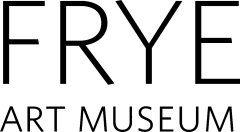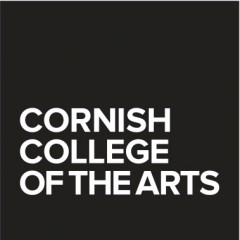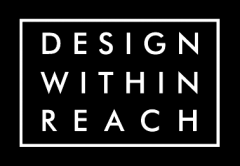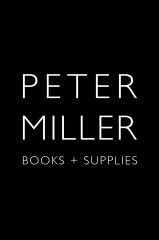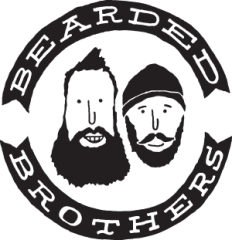The Godfather of Dutch Graphic Design
Karel Martens
EP XIX — Graphic designer, educator, and artist Karel Martens shares why inquiry and investigation are so important to the creative process, how he has balanced five decades of independent and client work, and why he considers the color green to be a small miracle.
Pushing Boundaries
Archie Boston
EP XVIII — Seminal graphic designer Archie Boston discusses his provocative posters from the 60's and 70's, the designer's role as activist, and his recent work for the Black Lives Matter movement.
West Coast Modernist
Eric Trine
EP XVII — California-based object designer and artist Eric Trine discusses the evolution of the color pink, being part of the West Coast design movement, and incorporating play into his work and his brand.
Do Everything and Do It Well
Poketo
EP XVI — Ted Vadakan and Angie Myung, founders of the LA-based art and design brand, design retailer and community space, Poketo, discuss how they got their start, their mission of making art accessible for everyone, and their positions as both business leaders and creatives.
Making Room for Artists
Adria Garcia & Davora Lindner
EP XV — Artists, designers, activists and entrepreneurs, Adria Garcia and Davora Lindner, sit down for a conversation on fusing art and style into the everyday, staying true to your ethics as a business-owner, and how supporting the creative community can be a natural extension of business.
Turning Words Into Objects, Part II
Experimental Jetset
EP XIV — Amsterdam-based graphic design firm Experimental Jetset discusses how they landed the Whitney Museum rebrand, the differences between European and American design influences, why they chose so many years ago to use only sans serif typefaces, and what the visual language of the modernists is.
Turning Words Into Objects, Part I
Experimental Jetset
EP XIII — Experimental Jetset, one of the most influential and respected design firms in the world, discusses their new book “Statement and Counter-Statement”, how their design practice uniquely operates like something they call Total Football, how they designed their iconic "John & Paul & Ringo & George" t-shirt and who they design for when they design.
Strategic Interruptions
Robert Vazquez-Pacheco of Gran Fury
EP XII — Robert Vazquez-Pacheco, a member of Gran Fury, the activist arts collective that created protest graphics in the 80's and 90's to raise awareness for the AIDS epidemic, discusses the importance of clarity in Gran Fury's messaging, their use of controversial guerrilla tactics that forced people to engage in their work, how they played the art world to fund their public works, and turning anger, fear, and grief into action.
Style and Substance
Max Dautresme of Substance
EP XI — Max Dautresme, founder of Substance, a multi-disciplinary design studio in Hong Kong, Paris and Stockholm, discusses how he stays true to the craft of design while working with major clients and how he finds inspiration in the downtime.
Size, Scale and Space
Katarina Ivarsson of Boris Design Studios
EP IX — Katarina Ivarsson, DFA award-winning industrial designer and co-founder of Boris Design Studios, shares her strategies as an agent for sustainable change and her process for designing for place and environment.
The Art of Design
Paula Scher & April Greiman
EP VIII — Paula Scher and April Greiman, two graphic design legends, sit down to discuss the blurring lines between art and design, the many forms inspiration can take, and what the ultimate purpose of design is.
Analog Clouds
Maria Sebregondi of Moleskine
EP VII — Maria Sebregondi, co-founder of Moleskine, inverts the Less is More philosophy, shares what she means when she talks about the analog cloud, and gives some sage advice to the contemporary nomad.
Risk / Opportunity
Kristian Koreman of ZUS
EP X — Kristian Koreman, founding principal of ZUS, an award-winning Dutch firm working in the fields of architecture, urbanism and landscape design, discusses the designer’s responsibility in shaping urban politics and how economic constraints can be turned into possibilities.
Building A Better World
Paloma Strelitz & Lewis Jones of Assemble
EP VI — Paloma Strelitz & Lewis Jones, two founders of Assemble, the London-based collective working across the fields of art, architecture and design and recent winners of the Turner Prize, share their inspiring take on the role of architecture and design in our communities.
The Designed Life
Ayse Birsel & Cameron Campbell
EP V — Product designer and author Ayse Birsel talks with design strategist and trend forecaster Cameron Campbell about what goes into a designed life and how we can apply design thinking to our everyday lives.
Wayfinding
Lance Wyman & Sean Wolcott
EP III — Graphic design legend Lance Wyman talks with user interface designer and creative director Sean Wolcott about wayfinding graphics.
Print Matters
Adrian Shaughnessy & Peter Miller
EP II — Publisher and author Adrian Shaughnessy talks with bookseller and author Peter Miller about the new era of print.
Art vs. Commerce
Maria Bianco & Kate Wallich
EP IV — Artist agent and business owner Maria Bianco talks with choreographer and director Kate Wallich about finding the balance between art and commerce.
Material World
Fruitsuper & Olderbrother
EP I — Product designers Sallyann Corn and Joe Kent of Fruitsuper Design talk with slow fashion designers Bobby Bonaparte and Max Kingery of Olderbrother about materiality.
Beyond This Point is a series of conversations engaging the creative thinkers who inspire us.
Each episode, Gabriel Stromberg, Creative Director of Civilization, sits down with artists, business owners, designers, and leaders of all types to put a spotlight on different ways of seeing, thinking, and making.
Beyond This Point is produced by Civilization, a Design Practice that develops brands and experiences that are ethical and impactful.
“You can make use of history but you must go further.” — Karel Martens
The Godfather of Dutch Graphic Design
Karel Martens
EP XIX — Graphic designer, educator, and artist Karel Martens shares why inquiry and investigation are so important to the creative process, how he has balanced five decades of independent and client work, and why he considers the color green to be a small miracle.
When Karel Martens began studying art in Holland in the late 1950s, “graphic design” did not exist as its own course of study. Today, he is widely recognized as one of the most important practitioners of that very discipline, with an esteemed client list that includes major publishers, architects, and institutions.
In 1998, the Leipzig Book Fair named Karel Martens: Printed Matter, designed by Martens with Jaap van Triest, the best-designed book “in the whole world.” Over the years his books have been regularly featured in the annual Best-Designed Dutch Books competition.
In 1997 Martens co-founded Workplaats Typografie (WT) at the Arnhem College of Art, a fully functioning graphic design studio run by his graduate students. He invites his students to help him in the design of the renowned architectural journal OASE, that has been awarded the H.N. Werkman Prize. Since that time he has also acted as a visiting professor at Yale University, hosting an annual three-week intensive in the post-graduate design school. Martens is currently a mentor in the master’s program at the Design Academy Eindhoven department of Contextual Design.
Brought to you by Civilization
Hosted by Gabriel Stromberg
Edited by Corey Gutch
Engineered by Dave West for London Bridge Studio
Mixed and Produced by Erik Blood
Intro music: “Reagan” by THEESatisfaction
Support for this episode was provided by
“Design can be a very strong force but it can only go so far, you have to be an activist too, you have to get out there” — Archie Boston
Pushing Boundaries
Archie Boston
EP XVIII — Seminal graphic designer Archie Boston discusses his provocative posters from the 60's and 70's, the designer's role as activist, and his recent work for the Black Lives Matter movement.
Archie Boston got his start as a graphic designer in the 1960’s. As one of the very few African Americans in the industry, he faced hurdle after hurdle from day one.
Early on Boston bounced between design studios and advertising agencies. By 1967 he and his brother Brad formed Boston & Boston Design. They set their logotype in a typeface called Jim Crow. As a new firm courting companies that did not know what to make of this outgoing studio with African-American principals, they scrapped constantly for clients.
For most of his career Boston has been a teacher. He began when he was 23, at Chouinard. In 1977, when he was 34, Boston became a full lecturer in the Department of Art at California State University Long Beach (CSULB). In 1978, he helped found the Design department and later the Visual Communication Design program. For the next 32 years, which included 12 terms as chair of that program, he made a significant impact on design education at the school.
Provocation and humor go hand-in-hand in Boston’s portfolio. By combining both aspects he has created unparalleled pieces of visual communication that evoke racist history while subverting it too. Changing perceptions about race takes perseverance, but Boston has always been enthusiastic about his role in the Los Angeles creative community. He was the first African American to be elected president of the Los Angeles Art Directors Club, where he served two terms.
Brought to you by Civilization
Hosted by Gabriel Stromberg
Edited by Corey Gutch
Mixed and Produced by Erik Blood
Intro music: “Reagan” by THEESatisfaction
"Stories should always be behind an object, not in front of it" — Eric Trine
West Coast Modernist
Eric Trine
EP XVII — California-based object designer and artist Eric Trine discusses the evolution of the color pink, being part of the West Coast design movement, and incorporating play into his work and his brand.
Eric Trine is an object-based designer and commercial artist working in the classic California modern style – clean, simple, casual, and approachable.
The Studio focuses on furniture and product design for the home, and small-scale design/build for commercial clients. The design studio is based in Long Beach, CA – all projects are conceived, engineered, and prototyped in-house. All production takes place within a 30 mile radius of the studio, through a network of trusted vendors and artisans.
Trine describes his aesthetic by posing the question: What if Charles Eames, Buckminster Fuller, and David Hockney were surfing buddies?
His work has been featured in the New York Times, LA Times, Wallpaper*, Elle Decor, Sunset, and Luxe magazines amongst many others.
Brought to you by Civilization
Hosted by Gabriel Stromberg
Edited by Corey Gutch
Mixed and Produced by Erik Blood
Intro music: “Reagan” by THEESatisfaction
“Be curious, explore, learn, be surprised and have fun” — Poketo
Do Everything and Do It Well
Poketo
EP XVI — Ted Vadakan and Angie Myung, founders of the LA-based art and design brand, design retailer and community space, Poketo, discuss how they got their start, their mission of making art accessible for everyone, and their positions as both business leaders and creatives.
Founded in 2003 by husband-and-wife team Ted Vadakan and Angie Myung, Poketo is a lifestyle brand and purveyor of design-driven wares meant to instill art into everyday living. Over the years, Poketo has grown from an upstart creative enterprise to an online destination with two retail locations in Los Angeles: The Poketo Flagship in the Arts District of Downtown LA and Poketo at The LINE Hotel. Both locations regularly host art exhibitions, workshops, and more, acting as hubs for the local creative community. In addition to collaborating with over 200 international artists on exclusive products, Poketo has worked with notable companies and brands including Nike, MTV, SF MoMA, De Young Museum, Disney, Target, and Nordstrom.
Brought to you by Civilization
Hosted by Gabriel Stromberg
Edited by Corey Gutch
Mixed and Produced by Erik Blood
Intro music: “Reagan” by THEESatisfaction
“Why would we play by other people's rules?” — Davora Lindner
Making Room for Artists
Adria Garcia & Davora Lindner
EP XV — Artists, designers, activists and entrepreneurs, Adria Garcia and Davora Lindner, sit down for a conversation on fusing art and style into the everyday, staying true to your ethics as a business-owner, and how supporting the creative community can be a natural extension of business.
Adria Garcia is an installation artist, painter, designer, curator, mother, connector, and the proprietor of Indian Summer, a vintage clothing store on a quiet corner in Capitol Hill. For Garcia, maintaining this shop as a place for people to connect with themselves and others through self-expression is just as important as the clothes she sells.
Davora Lindner moved to Seattle in 2004 to establish a line of women’s contemporary apparel. She is co-founder of Prairie Underground where she remains a Creative Director. Her work has been exhibited at the Walker Art Center and Minneapolis Institute of Art. In 2014/15 she co-curated the Mo-Wave! Queer Art and Music Festival and served on the Board of Directors at On the Boards.
Brought to you by Civilization
Hosted by Gabriel Stromberg
Edited by Corey Gutch
Engineered by Dave West for London Bridge Studio
Mixed and Produced by Erik Blood
Intro music: “Reagan” by THEESatisfaction
Support for this episode was provided by
“When we think of modernism it's very linked to the social democratic environment we grew up in.” — Experimental Jetset
Turning Words Into Objects, Part II
Experimental Jetset
EP XIV — Amsterdam-based graphic design firm Experimental Jetset discusses how they landed the Whitney Museum rebrand, the differences between European and American design influences, why they chose so many years ago to use only sans serif typefaces, and what the visual language of the modernists is.
Amsterdam studio Experimental Jetset is composed of just three designers: Marieke Stolk, Erwin Brinkers, and Danny van den Dungen. Together they have cemented themselves as one of the most inventive graphic studios in the world. A large collection of their work has been included in MoMA’s permanent collection.
This is Part 2 of our conversation with Experimental Jetset.
Brought to you by Civilization, in partnership with Design Speaks
Hosted by Gabriel Stromberg
Edited by Corey Gutch
Mixed and Produced by Erik Blood
Intro music: “Reagan” by THEESatisfaction
Support for this episode was provided by
“Language lives inside us, and in turn, we want to live inside language” — Experimental Jetset
Turning Words Into Objects, Part I
Experimental Jetset
EP XIII — Experimental Jetset, one of the most influential and respected design firms in the world, discusses their new book “Statement and Counter-Statement”, how their design practice uniquely operates like something they call Total Football, how they designed their iconic "John & Paul & Ringo & George" t-shirt and who they design for when they design.
Amsterdam studio Experimental Jetset is composed of just three designers: Marieke Stolk, Erwin Brinkers, and Danny van den Dungen. Together they have cemented themselves as one of the most inventive graphic studios in the world. A large collection of their work has been included in MoMA’s permanent collection.
This is Part 1 of our conversation with Experimental Jetset.
Brought to you by Civilization, in partnership with Design Speaks
Hosted by Gabriel Stromberg
Edited by Corey Gutch
Mixed and Produced by Erik Blood
Intro music: “Reagan” by THEESatisfaction
Support for this episode was provided by
“We never apologized for the work we did” — Robert Vazquez-Pacheco
Strategic Interruptions
Robert Vazquez-Pacheco of Gran Fury
EP XII — Robert Vazquez-Pacheco, a member of Gran Fury, the activist arts collective that created protest graphics in the 80's and 90's to raise awareness for the AIDS epidemic, discusses the importance of clarity in Gran Fury's messaging, their use of controversial guerrilla tactics that forced people to engage in their work, how they played the art world to fund their public works, and turning anger, fear, and grief into action.
Gran Fury was an activist artist and guerrilla graphic design collective from New York City consisting of 11 members, including: Richard Elovich, Avram Finkelstein, Amy Heard, Tom Kalin, John Lindell, Loring McAlpin, Marlene McCarty, Donald Moffett, Michael Nesline, Mark Simpson and Robert Vazquez-Pacheco. The collective began in 1987 and was ACT UP’s (AIDS Coalition to Unleash Power) unofficial propaganda ministry. During the 80’s and 90’s, Gran Fury was at the forefront of the fight to end the silence surrounding the AIDS crisis. The public works and graphic campaigns they created, including — “Silence=Death,” “Women don’t get AIDS…they just die from it,” “Read My Lips,” “Kissing Doesn’t Kill” — raised public awareness of the AIDS epidemic, put pressure on politicians to end the silence around AIDS and sparked intense debate.
Brought to you by Civilization
Hosted by Gabriel Stromberg
Engineered and Edited by Corey Gutch
Mixed and Produced by Erik Blood
Intro music: “Reagan” by THEESatisfaction
“Napping for the explicit reason of conjuring surreal ideas is completely justifiable.”
Style and Substance
Max Dautresme of Substance
EP XI — Max Dautresme, founder of Substance, a multi-disciplinary design studio in Hong Kong, Paris and Stockholm, discusses how he stays true to the craft of design while working with major clients and how he finds inspiration in the downtime.
In their own words, “Substance is a collective of people with imaginations so far reaching, that if we were a single hybrid person you would probably be afraid to be our friend.”
Brought to you by Civilization
Hosted by Gabriel Stromberg
Engineered and Edited by Corey Gutch
Mixed and Produced by Erik Blood
Intro music: “Reagan” by THEESatisfaction
“I fucking hate ecoluxury.”
— Katarina Ivarsson
Size, Scale and Space
Katarina Ivarsson of Boris Design Studios
EP IX — Katarina Ivarsson, DFA award-winning industrial designer and co-founder of Boris Design Studios, shares her strategies as an agent for sustainable change and her process for designing for place and environment.
Boris, founded in 2009 by the Anna Karlsson and Katarina Ivarsson, is a product design studio based in Hong Kong and Stockholm. Boris creates designs with a sense of humor and a unique style blending design, sustainability and technology. focus on sustainability, design and technology.
Brought to you by Civilization
Hosted by Gabriel Stromberg
Engineered and Edited by Corey Gutch
Mixed and Produced by Erik Blood
Intro music: “Reagan” by THEESatisfaction
Support for this episode was provided by
“The goal of design is to elevate expectations and make something artful.” — Paula Scher
The Art of Design
Paula Scher & April Greiman
EP VIII — Paula Scher and April Greiman, two graphic design legends, sit down to discuss the blurring lines between art and design, the many forms inspiration can take, and what the ultimate purpose of design is.
Paula Scher, one of the world’s most acclaimed graphic designers, has pushed the boundaries of visual communication for over three decades. Iconic, smart and unabashedly populist, her images have entered into the American vernacular. She began her career as an art director in the 1970’s and early 80’s, when her eclectic approach to typography became highly influential. Since 1991 she has been a designer and partner in the New York office of international design consultancy, Pentagram. In that time she has created iconic work for The Public Theater, MoMA, and The Metropolitan Opera, among many others.
April Greiman is an internationally acclaimed American graphic designer and artist. She is recognized as one the first designers to utilize computer technology as a tool for design in the 1980’s, and to pioneer the American “New Wave” design style. She currently runs the multi-disciplinary design consultancy Made in Space in Los Angeles.
Brought to you by Civilization
Hosted by Gabriel Stromberg
Edited by Corey Gutch
Engineered by Dave West for London Bridge Studio
Mixed and Produced by Erik Blood
Intro music: “Reagan” by THEESatisfaction
Support for this episode was provided by
“Without creativity, no change is possible.” — Maria Sebregondi
Analog Clouds
Maria Sebregondi of Moleskine
EP VII — Maria Sebregondi, co-founder of Moleskine, inverts the Less is More philosophy, shares what she means when she talks about the analog cloud, and gives some sage advice to the contemporary nomad.
Maria Sebregondi, co-founder and Vice President of Brand Equity for Moleskine, was born and raised in Italy. During the 1990’s, Sebregondi approached Modo & Modo, a small Milanese design and publishing firm, with the idea of resurrecting an old style of notebook. In 1997, the company began producing the now iconic Moleskine notebooks. Since then, the brand has expanded into diaries, bags, cases and digital products.
Engineered by Dave West / London Bridge Studio
Edited by Corey Gutch
Mixed and Produced by Erik Blood
Intro music: “Reagan” by THEESatisfaction
Support for this episode was provided by
“Design can sometimes flip risks into opportunities” — Kristian Koreman
Risk / Opportunity
Kristian Koreman of ZUS
EP X — Kristian Koreman, founding principal of ZUS, an award-winning Dutch firm working in the fields of architecture, urbanism and landscape design, discusses the designer’s responsibility in shaping urban politics and how economic constraints can be turned into possibilities.
ZUS is a Rotterdam and NY-based firm working on solicited and unsolicited designs and research studies in the fields of architecture, urbanism and landscapes. The founders, Elma Van Boxel and Kristian Koreman, have a strong belief that the architect has to claim a strong position in the public debate on the future of our cities, the duo sees a large share of their pro-active work as urban politics.
An example of such work is the Test Site Rotterdam, a project where ZUS turned a vacant office block in the heart of Rotterdam into a working urban laboratory. The building is bisected by a partially-crowdfunded 340 meter wooden pedestrian bridge that re-connects three once fragmented districts in Rotterdam’s city center. The once vacant block is now rented to young entrepreneurs, and with its ground-floor store, bar, culinary workshop, information centre, and its rooftop field called the Dakakker, Europe’s first urban farming roof, it has become a prototype for sustainable development.
Brought to you by Civilization
Hosted by Gabriel Stromberg
Engineered and Edited by Corey Gutch
Mixed and Produced by Erik Blood
Intro music: “Reagan” by THEESatisfaction
Support for this episode was provided by
“Architecture is about setting up the conditions where people live their lives - in that sense, it is really only the beginning.” — Paloma Strelitz
Building A Better World
Paloma Strelitz & Lewis Jones of Assemble
EP VI — Paloma Strelitz & Lewis Jones, two founders of Assemble, the London-based collective working across the fields of art, architecture and design and recent winners of the Turner Prize, share their inspiring take on the role of architecture and design in our communities.
Assemble is a collective based in London working across the fields of art, architecture and design. They began working together in 2010 and are currently comprised of 16 members. Assemble’s working practice seeks to address the typical disconnection between the public and the process by which places are made. Assemble champions a working practice that is interdependent and collaborative, seeking to actively involve the public as both participant and collaborator in the on-going realization of the work.
Recorded from Hong Kong.
Special thanks to Toni Chan and Janisa Hui at Golin.
Hosted by Gabriel Stromberg
Edited and Engineered by Corey Gutch
Mixed and Produced by Erik Blood
Intro music: “Reagan” by THEESatisfaction
Support for this episode was provided by
“It's our job, as those in the creative field, to communicate what the optimism of the future can be.”
— Cameron Campbell
The Designed Life
Ayse Birsel & Cameron Campbell
EP V — Product designer and author Ayse Birsel talks with design strategist and trend forecaster Cameron Campbell about what goes into a designed life and how we can apply design thinking to our everyday lives.
Ayse Birsel has been designing award-winning products for over twenty years. She is the co-founder of Birsel+Seck, an innovative design studio in New York that partners with leading brands, including Target, Herman Miller, Hewlett Packard, and Johnson & Johnson.
Cameron Campbell, is a design strategist, historian, influencer, trend forecaster, and trendsetter. Over the course of her career she has built brand and product strategies for Boeing, Apple, Nike and Herman Miller among many others.
Recorded live from Design Within Reach.
Engineered by Dave West for London Bridge Studio
Edited by Civilization
Mixed and Produced by Erik Blood
Intro music: “Reagan” by THEESatisfaction
Support for this episode was provided by
“We’re not really talking about icons or symbols, we’re talking about strategies, we’re talking about systems.”
— Lance Wyman
Wayfinding
Lance Wyman & Sean Wolcott
EP III — Graphic design legend Lance Wyman talks with user interface designer and creative director Sean Wolcott about wayfinding graphics.
Graphic designer Lance Wyman has become an unquestioned master of transforming space through branding and wayfinding over his 50+ year career as a designer and teacher. Through his designs for massive urban systems, airports, zoos, museums, and most notably the 1968 Mexico Olympics identity, his thoughtful and culture-sensitive work has helped define the field of environmental graphics.
Sean Wolcott is a Seattle-based graphic designer, currently working as a Creative Director at Microsoft. Besides creating user interfaces and experiences for products used by millions, Mr. Wolcott runs his own practice, Rationale, where he designs identities, user interfaces, websites, packaging, and publications for a wide range of clients.
Recorded live from Peter Miller Books.
Engineered by Dave West for London Bridge Studio
Edited by Civilization
Mixed and Produced by Erik Blood
Intro music: “Reagan” by THEESatisfaction
Support for this episode was provided by
“I think boredom has vanished, I wonder what that does to creativity. Let’s get bored.”
— Adrian Shaughnessy
Print Matters
Adrian Shaughnessy & Peter Miller
EP II — Publisher and author Adrian Shaughnessy talks with bookseller and author Peter Miller about the new era of print.
Adrian Shaughnessy is a graphic designer, writer and senior tutor at the Royal College of Arts, London. He has written numerous books, including a published compendium of his design journalism: Scratching the Surface, and monographs devoted to legendary designers Herb Lubalin, Ken Garland, FHK Henrion and Lance Wyman.
Peter Miller has run the architecture & design bookshop Peter Miller Books for over 35 years. He is also author of Lunch at the Shop, a cookbook ode to lunch.
Recorded live from Peter Miller Books.
Engineered by Dave West for London Bridge Studio
Edited by Civilization
Mixed and Produced by Erik Blood
Intro music: “Reagan” by THEESatisfaction
Support for this episode was provided by
“Hard work is a constant state of energy and thought.”
— Maria Bianco
Art vs. Commerce
Maria Bianco & Kate Wallich
EP IV — Artist agent and business owner Maria Bianco talks with choreographer and director Kate Wallich about finding the balance between art and commerce.
Kate Wallich is an award-winning Seattle-based choreographer, director and teacher. In 2010 she co-founded her dance company The YC with Lavinia Vago and in 2015 she was named one of Dance magazine’s “25 to Watch.”
Maria Bianco is founder and owner of Bianco Artists – a boutique artist agency which includes on its roster a select group of photographers, stylists, designers and directors working around the world. With over 15 years of experience as a commercial artist rep, editor and executive producer Maria has produced award-winning photo and film content across the globe.
Recorded live from Design Within Reach.
Engineered by Dave West for London Bridge Studio
Edited by Civilization
Mixed and Produced by Erik Blood
Intro music: “Reagan” by THEESatisfaction
Support for this episode was provided by
“We want you to fall in love with the idea of actual value.”
— Sallyann Corn
Material World
Fruitsuper & Olderbrother
EP I — Product designers Sallyann Corn and Joe Kent of Fruitsuper Design talk with slow fashion designers Bobby Bonaparte and Max Kingery of Olderbrother about materiality.
Sallyann Corn and Joe Kent, partners in both business and life, founded Fruitsuper Design in 2008. Fruitsuper, a Seattle-based design studio, creates products that are a balance of fun and function.
Bobby Bonaparte and Max Kingery together run slow fashion brand Olderbrother. Based in Portland and LA, Olderbrother is focused on creating gender-neutral luxury clothing items from locally crafted materials and eco-conscious fabrics and dyes.
Recorded live from The Bullitt Center, widely hailed as the “greenest office building in the world.”
Engineered by Dave West for London Bridge Studio
Edited by Civilization
Mixed and Produced by Erik Blood
Intro music: “Reagan” by THEESatisfaction
Support for this episode was provided by



